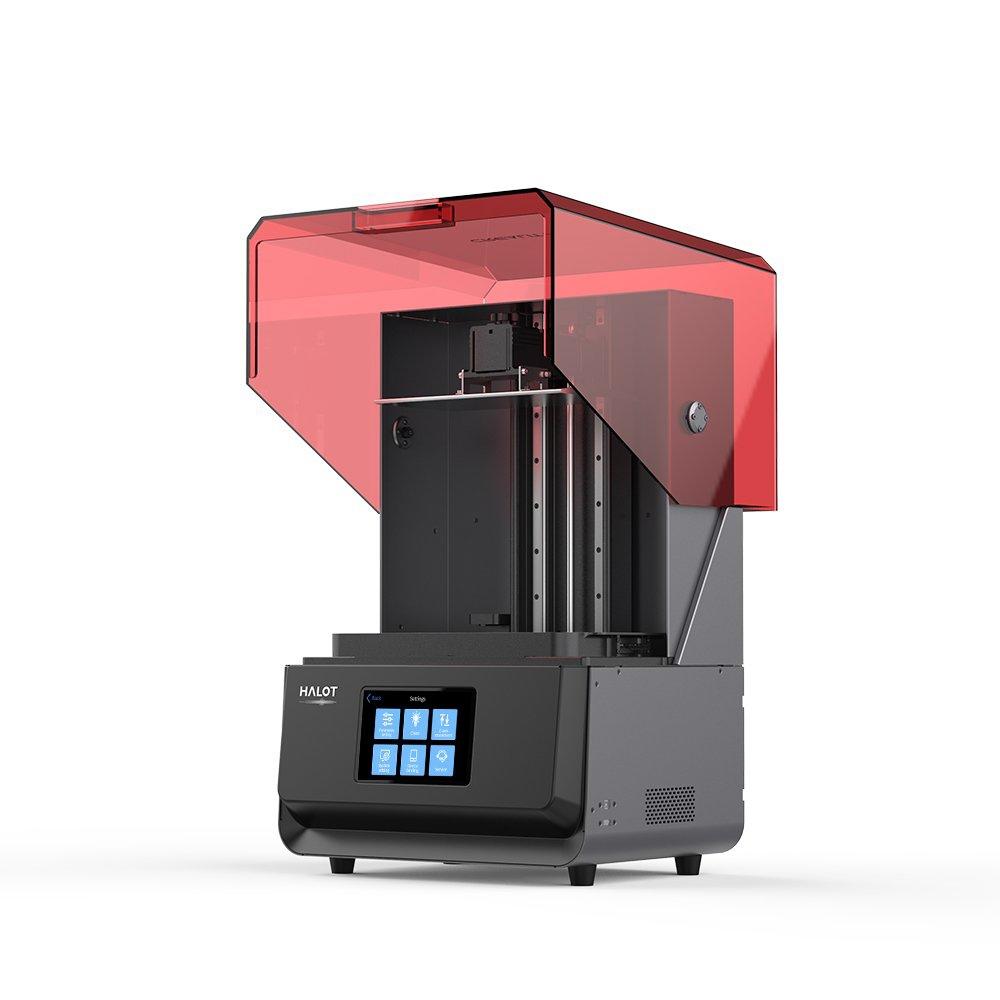Compare Halot Max vs Comgrow T300
Comparison between the best 3D printers
Choose the best 3D printer at the best price. The cheapest 3D printers are here.
Buy a 3D printer here with 3D Fila.
 |
 |
|
| Model | Halot Max[BUY Halot Max] |
Comgrow T300 |
| Printing Material | Resin | Filament |
| Buy Resin for Creality 3D Halot Max | Buy Filament forSovol Comgrow T300 | |
| Estimated price | $3000,00 | $449,00 |
| Manufacturer | Creality 3D | Sovol |
| Release Year | 2021 | 2024 |
| Print Volume [mm] | 293x165x300 | 300x300x350 |
| Printer Size [mm] | 480x387x770 | 503x631x831 |
| Weight [kg] | 32,5 | 17 |
| Power Loss Recovery | NO | YES |
| Maximum Resolution [mm] | 0,03 | 0,1 |
| Processor | 64 bit | |
| Display | Display touchscreen 5'' | Touchscreen 5'' |
| Power Supply | 150 W | |
| Connectivity | SD / USB / Wi-Fi | USB, WiFi |
| Operating systems | Windows, Mac, Linux | Windows, Linux, Macbook |
| Date of registration in the system | 2022-11-04 | 2024-05-10 |
| Release date | 2021 | 2024 |
| Extra features | The Halot Max printer stands out for its large print size (293 x 165 x 300 mm) and uses SLA technology. It has an integral light source for improved accuracy and a strong core with an advanced operating system. Its Z-axis module ensures high precision, supported by efficient slicing software. The machine offers online OTA updates and boasts an adjustable layer thickness between 10 and 200 microns. Its XY-axis resolution is 3840*2160, with 0.05 mm accuracy, and an integral 405nm light source. The printer includes a 5" touchscreen and multiple connectivity options, such as USB, Creality Cloud, and HALOT BOX WiFi. With cutting-edge technology, the Halot Max is ideal for printing small models with uniform precision, thanks to its self-developed lighting system and stable printing mechanism, which includes dual linear guides, ball screws, and an intelligent brake system. | The Sovol Comgrow T300 printer stands out for its technological innovations and advanced features. With a print size of 300mm300mm350mm, the T300 offers true linear rails on all axes, ensuring greater stability. Its Klipper-based intelligent core and 64-bit microcomputer increase printing speed and quality through pressure advancement and input shaping. The extruder with a gear ratio of 6.5:1 allows for more precise material control, optimizing the printing of flexible materials. In addition, the T300 features a rapid filament cooling system with a high-speed fan and a circular duct piece that improves cooling efficiency. With a 4.3-inch high-refresh rate touchscreen and an 81-point automatic leveling system, the T300 simplifies the preparation and execution of 3D prints. |
| Support for multiple colors and materials (AMS and CFS) | NO | NO |
Notes * |
||
| Cost-benefit | 5 / 10 | 8 / 10 |
| Hardware | 1.2 / 10 | 3.6 / 10 |
| Tela | . | . |
| Print volume | 3 / 10 | 4 / 10 |
| Performance | 9 / 10 | 5 / 10 |
| [BUY Halot Max] |
Conclusion |
| In comparing the Halot Max and the Comgrow T300 3D printers, significant differences emerge, particularly in aspects of price, functionality, and suitability for various users. The Halot Max, being substantially more expensive, targets professionals and serious enthusiasts who demand high precision and larger print sizes for intricate designs. Its SLA technology, combined with features like a high-resolution XY-axis and robust build quality, makes it ideal for producing detailed prints consistently. However, its lack of power loss recovery may be a drawback for users who require uninterrupted printing capabilities. On the other hand, the Comgrow T300, with its lower price point and recent release, offers an excellent balance of performance and accessibility. Its larger print volume and innovative features, such as true linear rails for improved stability and a Klipper-based core for efficient printing, make it a versatile option for both beginners and seasoned hobbyists alike. The inclusion of an automatic leveling system further enhances user-friendliness, making it a great choice for those who prioritize ease of use. When considering cost-effectiveness, the T300 emerges as a better value, especially for users who might not require the high precision that the Halot Max offers. In conclusion, the choice between the two printers ultimately hinges on the user's specific needs: the Halot Max for professional-grade precision and detailed work, and the Comgrow T300 for versatility and affordability in 3D printing. |

